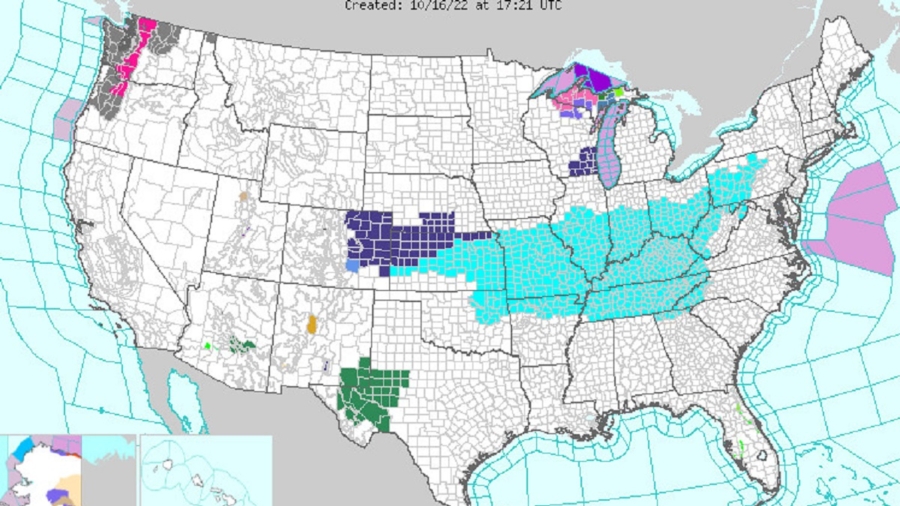A blast of cold air will impact the midwestern and eastern United States starting this week, forcing Americans to start using their heaters and stoves.
“It will feel more like November for many next week,” AccuWeather senior meteorologist Tyler Roys said.
The National Weather Service said Sunday that an “increasingly cold and unsettled weather pattern is forecast to develop across the Upper Midwest and spread east across the East Coast over the next couple of days.”
“The cold air surging into the Great Lakes behind an intensifying low pressure system will lead to mixed precipitation to expand eastward into the interior Northeast by Tuesday morning,” according to the update. “Interior New England may see a quick round of heavier rain as a warm front lifts through the region on Monday before colder air arrives from the west later in the day.”
Currently, freeze warnings and watches are in effect for Nebraska, Colorado, Kansas, and they are likely to spread.
“A major snow event is not anticipated by any means across the interior Northeast, but this will serve as a reminder that winter is not too far off,” AccuWeather’s Brandon Buckingham told the website, adding that people should consider remaining fall cleanup or winterizing projects for their homes due to the early cold arrival.
“The best chance for accumulations between a dusting and perhaps an inch or two will reside in the typical lake-effect snow belts in northwestern Pennsylvania and western and northern New York,” Buckingham added.
The cold could indicate increased demand for power as millions of Americans turn on their heaters in a bid to offset the freezing weather. U.S. natural gas prices have declined for the past several months despite elevated prices across Europe and elsewhere.
“Globally, we’re feeling better about ourselves and about the natural gas storage levels that we have now,” Gary Cunningham, the head of market research at risk management firm Tradition Energy, told Bloomberg News last week.
If there’s a harsh winter, Cunningham noted that prices could surge in the United States.
“All of that can change very quickly and dramatically if we have a cold start to winter,” he said.
In March, President Joe Biden committed to delivering 15 billion cubic meters more of liquefied natural gas to Europe following Russia’s invasion of Ukraine and has already surpassed that goal.
The price of natural gas, which heats about 50 percent of U.S. households, is expected to increase about 34 percent compared with last year, and up 66 percent from the winter of 2020–21, the National Energy Assistance Directors’ Association said in a recent report. Some power companies that rely on natural gas in the U.S. northeast are warning consumers that electricity bills could soar by 60 percent this winter.
Reuters contributed to this report.
From The Epoch Times


